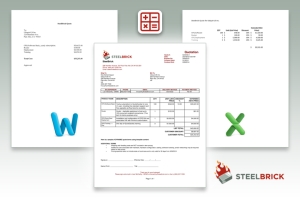Product or service sales are the backbone of your business. From covering salaries and operating expenses to purchasing inventory, your sales are what make your organization successful. So it only stands to reason that accurate sales forecasting is vital to your company’s success. When your sales people create and manage multiple quotes manually within a CRM platform, a legion of complications can arise, including forecasting errors. By not leveraging the right quoting tools, you run the risk of inaccurately predicting future performance and suffering major losses because you’ve anticipated revenues that never come.
To most efficiently and accurately manage multiple quotes and close business, the process must be automated. While some businesses have recognized the potential of automation and the ways in which it leverages all the necessary information from their CRM platforms quickly and efficiently, many have not yet realized the value.
To illustrate the ways in which automation can streamline your quoting process and lead to much more accurate forecasts, I’ve listed the top three benefits of using a powerful automation tool, and, to drive home my points, I’ve also compared the outdated manual method to the faster and more innovative automated approach.
1. Speed: Your Quoting Process Should Not Take Forever
Then: For some organizations, the quoting process can take days — sometimes weeks — to complete. As a result, the sales managers responsible for the delays look unprofessional and unreliable to prospective clients. More important to the bottom line, though, is that the longer a prospect is forced to wait for a quote, the more time he has to reach out to your more innovative competitors.
Now: A tool that automatically leverages all the necessary information from a CRM platform is fast, extremely efficient and user friendly. With just one click, reps log into the tool to create customized quotes themselves, without having to wait for guidance from a sales manager. Automation allows them to create quotes when they need them, not a few hours or days later, when a warm lead has turned cold.
2. Simplicity: Your Quoting Process Should Not Be Cumbersome
Then: When a prospect requests a quote, he often asks that it be built around various scenarios and/or product bundles, so that he can make a well-informed decision based on his current and future needs. This request can be a complicated one if the process is managed manually. The rep charged with replying must research the price book, copy and paste the prices for different bundles and products into a spreadsheet, and then remember and record the scenarios that qualify the prospect for a discount.
This process is not only cumbersome, but it’s also very likely based on a limited understanding of the CRM platform and an error-riddled collection of data and analysis from Excel. As a result, the quote, in all its forms, will be inaccurate.
Now: By adding product and pricing information to the CRM, where it lives in real-time and is accessible to anyone, the chance of forming a quote with inaccurate information is eliminated. Plus, by looking at tools that filter and auto-populate product and pricing details, as well as product bundle details, multiple quotes for multiple opportunities (including their appropriate discounts) can be created without difficulty. And the best part is, quotes formed through automation are accurate 100% of the time.
3. Piece of Mind: Your Quoting Process Shouldn’t Frustrate You
Then: Bad quotes cost money. When an inaccurate quote is sent to a lead, and the lead accepts, there’s no adjusting the price. The quote must be honored. When forecasts are based on inaccurate numbers, there’s a snowball effect, because those wrong numbers are then used to calculate a quote.
If you can’t gauge what’s in your pipeline, you can’t tell if your sales team is going to make their numbers. Manual and cumbersome pricing makes it hard for sales management to see where they are based on quota and raises the risk of error in the quote creation process.
Now: An automated tool that eliminates steps, removes any chance of human error, and provides everyone on a sales team with the same accurate information can save money.
To sum up, organizations that want to efficiently and accurately manage multiple quotes need a quoting tool that will:
- Increase data visibility and communication between management and sales teams
- Automatically leverage accurate-up-to-the-minute pricing rules and product bundling information
- Eliminate human error and avoid the repercussions of inaccurate forecast results
The manual quoting process was good enough for yesterday’s reps, but today’s technologically advanced and data-driven sales forces need more. With quoting automation that leverages their information assets and speaks to their drive, you can streamline their continued success.



